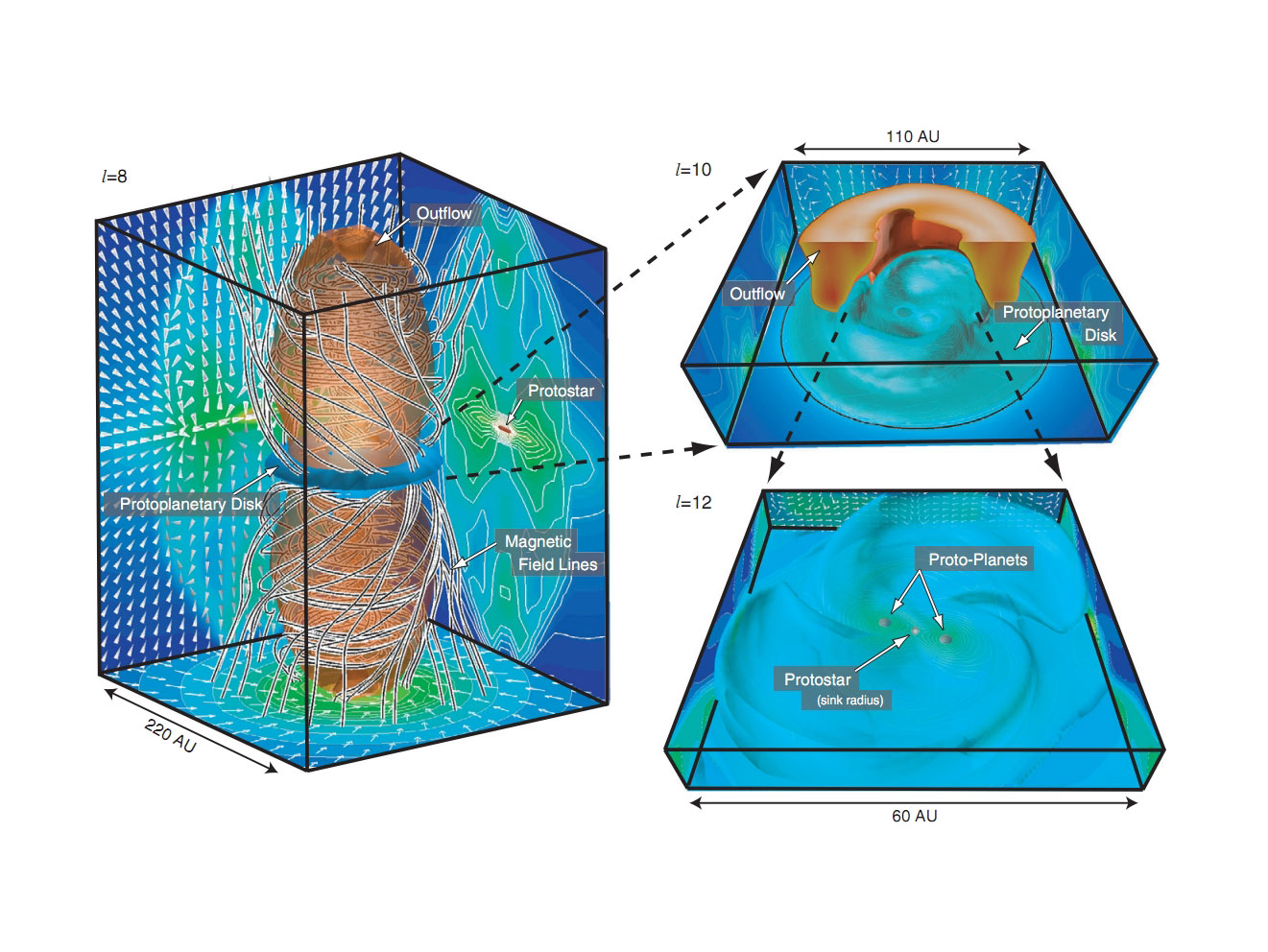Home > For Researchers > Public Research > Introduction of adoption public research ②
Introduction of adoption public research ②
Atmospheric composition of exoplanets determined by simultaneous precision transit observations in 6 visible and infrared bands
(Takahiro Nagayama / University of Kagoshima)
As a result of successive discoveries by telescopes such as the Kepler Space Telescope, the number of exoplanets (including planet candidates) is now more than 2,000. Consequently, exoplanet research has shifted from the “discovery” phase to the “characterization” phase. Researchers are now charactering these planets by measuring their orbital radius, mass, size, and other characteristics, and classifying them based on these characteristics. Exoplanets are being confirmed in categories which were completely unexpected in conjectures that were based on our solar system. These include “Hot Jupiters” which are the size of Jupiter and orbit the primary star in approximately 10 days, and “Super Earths” which are several times the size of the Earth. One question that remains is what kind of atmospheres do these exoplanets have?
It is extremely difficult to investigate the atmospheric composition of a dim planet located extremely close to the primary star. At present, the only method that is available is transmission spectroscopy of transits, when a part of the primary star’s light is blocked by shadow when the planet passes in front of the star. This method utilizes the fact that the manner in which the primary star dims varies at each observed wavelength according to the composition of the planet’s atmosphere. When a planet with an atmosphere transits, although the light striking the center of the planet is completely blocked, the light which passes through the atmosphere part of the planet is partially reduced in brightness according to the composition and density of the atmosphere. The wavelength dependence of extinction that can be obtained by observation can be compared with theoretically predicted results to estimate the composition of the planet’s atmosphere.
Because this is the only available method at present, it is used by researchers around the world. However there are few systems that allow simultaneous observation, particularly of visible light and infrared light, and in most cases data points from different groups using different observation equipment and obtained on different orbit transits are assembled in order to discuss the atmospheric composition of a single exoplanet. As a result, considerable time is required in order to determine the atmospheric composition of an exoplanet, and the atmospheric compositions of only a few exoplanets have been investigated. Therefore we do not know whether the atmospheric configuration of an exoplanet is unique to that exoplanet, or whether it is universal and there are many other exoplanets with similar atmospheres. In addition, there are large compounding effects from system error when the data is assembled, and there are frequently conflicting results from different research groups. In exoplanet transits, the there are cases when the sizes of sunspots on the primary star in comparison to the size of the planet cannot be discounted, and obtaining data for different wavelengths from transits events of different orbits cannot be expected to produce highly accurate discussion. In other words, the key issue is observing a greater number of wavelengths simultaneously with the same observation system. In order to investigate the universality and diversity of exoplanet atmospheres, it will be necessary to study the atmospheric composition of greater numbers of exoplanets in the future, and high observation efficiency by simultaneous multi-wavelength observation is essential for this purpose.
This study aims to expand the current simultaneous exoplanet transit observations (3 infrared wavelengths at 1.2 mm, 1.6 mm, and 2.1 mm) into the visual light band, and allow systematic, efficient, and highly accurate investigations of individual exoplanet atmospheres. The objective is not only to make the data more accurate and more efficient, but to also allow different atmospheric compositions to be estimated by simultaneous observation in the infrared region that is sensitive to molecular absorption by substances such as water vapor and methane, and in the visible light region that is sensitive to Rayleigh scattering by dust and haze in the atmosphere.
More specifically, we are developing a camera that images simultaneously at 3 visible-light wavelengths and that can be added onto the IRSF 1.4-meter telescope and the 3 infrared wavelength simultaneous imaging camera which Nagoya University has at its South Africa observatory. This will allow simultaneous transit observations at 6 wavelengths from visible light to infrared. Although there have been simultaneous observations at 3 visible light wavelengths or 3 infrared wavelengths in the past, simultaneous transit observation at 6 wavelengths covering visible light and infrared is something that has never been done before, and is expected to provide extremely unique results. At present, we are developing the camera for simultaneous imaging at 3 visible light wavelengths, and are aiming to complete it during the 2015 academic year.

